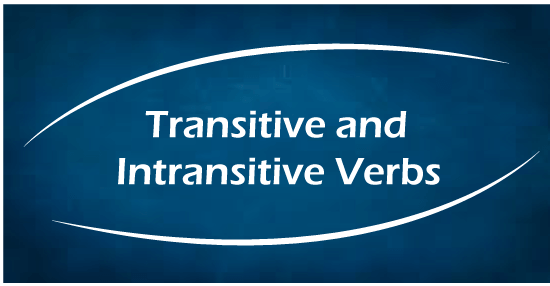Transitive and Intransitive verbsVerbs are a complex and necessary component of communication. There are various types of verbs, but we'll focus on two of them: transitive and intransitive verbs. Let us try and understand both of these verbs Transitive and Intransitive verbs. Also read through the examples, usage tips to explore the difference between a transitive verb and an intransitive verb. 
Verbs and Direct Objects-What You Must KnowBefore going into the distinction between transitive and intransitive verbs, there are are a couple things you must known and understand-verbs and direct objects. Verbs are words that describe an action, an event, or a state of being. The verbs are highlighted in the following examples:
A sentence complement is a direct object. These are nouns or pronouns that gain verbal action and respond to the questions "whom?" or "what?" The direct objects are highlighted in the instances below:
Transitive and Intransitive verbsLet's look at transitive and intransitive verbs now that we've covered verbs and direct objects. 1. Transitive VerbsVerbs with an object, in other words, the verbs that have an object, are called transitive verbs. That object may be a person or a thing that is affected by the action of the verb. There can be the passive form of the transitive verb. Examples:
A transitive verb also may have two objects 'direct object' (the thing someone does or gives or usually the name of the thing), and 'indirect object' (someone who receives the action, in other words, the person to whom something is given or for whom something is done). Examples:
Some more examples of the transitive verb
2. Intransitive VerbThe verb without an object, in other words, the verb that doesn't have an object, is called an intransitive verb. There cannot be the passive form of an intransitive verb. Examples:
Some important points about transitive and intransitive verb
Examples:She cooked slowly. (Here, the verb 'cooked' has no object, and it cannot be passivized, so it is intransitive). She cooked a sandwich. (Here, the verb 'cooked' has an object 'sandwich', and it can be passivized, so it is a transitive verb). Some ants fight very fiercely. (Intransitive) Some ants fought the wasps. (Transitive) The bus stopped suddenly. (Intransitive) The driver stopped the bus. (Transitive) Ram spoke loudly. (Intransitive) Ram spoke the truth. (Transitive)
Examples:I enjoy myself sitting alone. (Intransitive) He enjoys good health. (Transitive) Difference Between Transitive And Intransitive Verbs
Note: Here S, V, O ,C and A stands for Subject; Verb; Object; Complement and Adjunct respectivelyIdentifying Transitive Verbs When You Come Across ThemUnfortunately, determining whether a verb is transitive can be difficult at times since some verbs are neither transitive nor intransitive. Now for instance take in account the verb eat and the following examples:
The verb eat is a transitive verb in the first case since the action has a direct object - the poached eggs. The second instance, on the other hand, displays eat as an intransitive verb. There is no action involving a direct object; rapidly is an adverb that describes the eating act. Stroll, drive, study, and comprehend are more instances of transitive and intransitive verbs.
To identify a transitive verb, you must first grasp and recognize that it functions on a direct object. Identifying Intransitive Verbs When You Come Across As previously stated, numerous verbs can be transitive or intransitive, thus other portions of the sentence must be analyzed to determine the type of verb. Analyze the verb to sing, and consider the following examples:
Sang (the past tense of sing) is a verb that is transitive in the first case. The birds are performing a singing activity on a direct object - the love call In the other three situations, however, sang is an intransitive verb. We understand this since the first example has no direct object for the action, while the subsequent example has an adverb following it, and the last example has a preposition following it. As a result, we can identify an intransitive verb if it stands alone (without a direct object) or is accompanied by an adverb or preposition. Why You Should Be Aware Of TransitivityIs transitivity important? Yes, indeed understanding an dknowing transitivity is crucial since numerous verbs have distinct meanings depending on whether they are transitive or intransitive. Example
Understanding transitivity can also help you communicate more clearly. It indicates that for the statement to make sense, a transitive verb must be near to the direct object. Here's another reason why transitivity is important. When looking up the different meanings of a verb in a dictionary, you may come across entries beginning with 'transitive' and 'intransitive,' 'tr.' and 'intr.', or '(t)' and '(i)'. You now understand what this implies.
Next TopicTypes of Verb
|
 For Videos Join Our Youtube Channel: Join Now
For Videos Join Our Youtube Channel: Join Now
Feedback
- Send your Feedback to [email protected]
Help Others, Please Share









